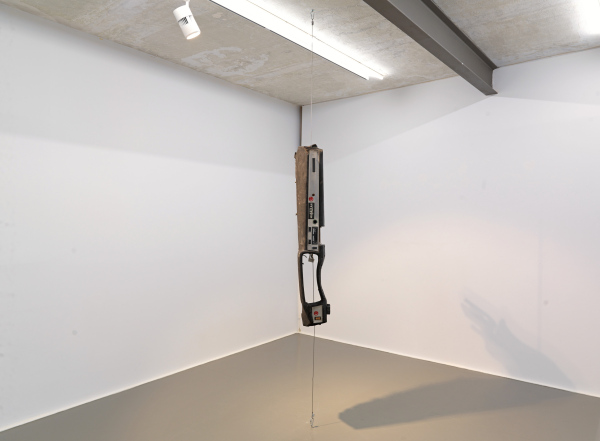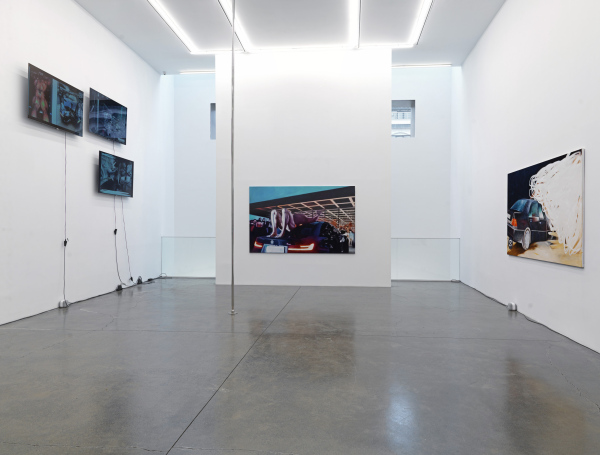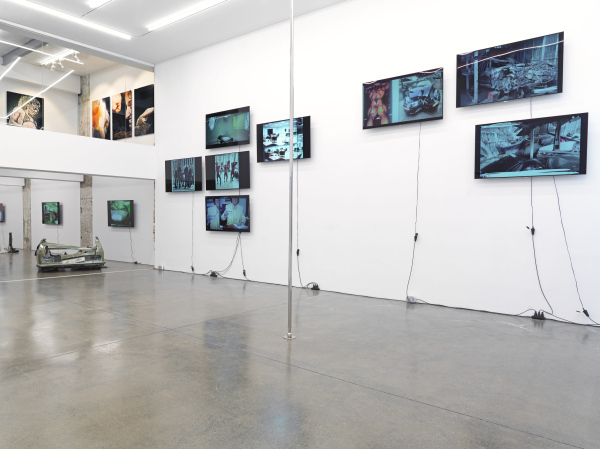Curated by Léon Kruijswijk
March 6 - April 6 2024
PİLEVNELİ | Dolapdere Istanbul
With Bygone Innocence the multidisciplinary artist Göksu Kunak (b. 1985) presents a new body of work that departs from the 1996 Susurluk car accident. The crash made a lasting impact on society and politics in Turkey, and disclosed the existence of a network in the crime-politics-state triangle, which had been talked about prior to the accident without being proved.
In Geçmiş Masumiyet / Bygone Innocence, Kunak contemplates the politics of concealing and erasing. They, however, do not dive deeper into specific complex socio-political entanglements Susurluk laid bare in its aftermath. The artist rather focuses on the car crash as a phenomenon; it is understood as a moment when technology has shown its worst effects and endangers human beings, and simultaneously as a moment when the falsities, or truths, of our constructed reality come to the fore. The notion of a crash is further seen as a fetish, a moment frozen in time in which various liaisons and relationships are crystalized, neither good nor bad, but as a dramatic moment, maybe even as a soap opera.
The exhibition includes a sculpture, an installation, paintings, prints and a series of short performances with a pole dancer and a climber. Through this eclectic combination the artist approaches the notion of crash as a simulacrum, as theorized by Jean Baudrillard, and looks at what can happen when it is under high pressure, while focusing on bodybuilding as well as on the body versus machine relationship.
Kunak explores the shell that mankind tends to create by cultivating strength of the body itself and by extending its power beyond its own capacities through substances and machines. Following this line of thinking, the highly trained muscle and the machine become an exaggerated, hyperreal configuration and extension of the human body.
Kunak’s new painting Siyah Araba / The Black Car is an abstracted processed image of their 2023 VENUS performance—a symbolically overloaded assemblage of clichés of immigration, movement, restriction, speeding up, getting stuck, and slowing down, in which a car was one of the protagonists. KAZA / The Accident depicts a reworked image of the renowned Susurluk crash.
The artist’s new series of photo collages displayed on TV screens titled Nasıl Oldu? / How Did it Happen?, Crash, and Sorgulama / The Interrogation explore the bureaucratic, surveillance and debris processing systems that become involved when a crash has occurred and further investigation should give clarification, or indicate that concealment is desired. The images may firstly appear familiar, but are altered and placed in a realm of the generic unknown.
The sculpture Atypical Attraction with scrap car elements of an Anadol car—the first mass produced car in Turkey—alludes to the time warp, or the moment of being frozen in time, when multiple factors have come unintendedly together and clashed.
The images of the installation DU, Maschine demonstrate Kunak’s admiration for female / afab bodybuilders. They play with the pressure exerted over simulacra in order to create and keep up a certain image, like contracted muscles. The series also hints at moments when such images are distorted or muscles twitch, and a level of truthfulness seems to peak through the glitch, thereby revealing the hyperreal falsity, but usefulness, of a simulacrum. With various live performances, the pole dancer and the climber proficiently show the extent of usefulness of overly trained, almost hyperreal muscles as a notion of simulacrum, whereby tension leads to moments of apprehension. With Geçmiş Masumiyet / Bygone Innocence, Göksu Kunak tests temporalities of suspense of disbelief, dread and shock, and dares to probe the idea of a museum of crash.
Text: Léon Kruijswijk
photos by Hadiye Cangökce












